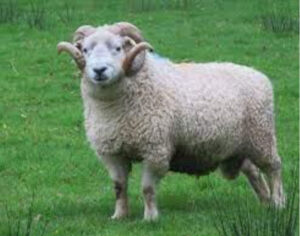Hip dysplasia is a common and often debilitating joint disease affecting many larger breed (usually pedigree) dogs. Affected dogs have a genetic tendency to develop the disease but the severity of the disease can be influenced by other factors.
What is an inherited joint disease?
Inherited diseases are genetic conditions passed from parents to their offspring. Sometime the puppy inherits the tendency to develop a disease and the severity may be influenced by factors in its upbringing such as feeding and exercise. Inherited diseases are much more common in pedigree dogs than in cross breeds and some conditions are more common in some breeds than others. Special scoring schemes have been developed for some inherited conditions these allow the early detection of the condition so that the individual can be treated, and to prevent the affected animal from being used for breeding thus passing the condition on to its puppies.
What is hip dysplasia?
Hip dysplasia is a common disorder typically affecting the hip joint of medium and large breed dogs. It causes instability of the joint, pain, lameness in the young dog and arthritis in later life. Hip dysplasia occurs when the ball-and-socket joint of the hip does not fit together properly. This results in rubbing, which damages the surfaces of the joint, leading to pain and eventually arthritis. The condition is probably partly inherited but other factors can affect the severity of the condition including diet, growth rate and the level of exercise given to young growing dogs of larger breeds.
What causes hip dysplasia?
The normal hip joint is a smoothly fitting ball-and-socket joint. The top of the thigh bone is smooth and round and fits tightly into a cup-shaped depression in the pelvis. Hip dysplasia is present from a very young age when the bones are still not fully developed and therefore soft. The hip joint fails to develop properly and abnormal stress on the joint causes the formation of arthritic new bone. The process becomes a vicious circle, exacerbated by obesity and over-exercise.
Hip dysplasia is not caused by a single factor. Some dogs are more likely to develop hip dysplasia because of their genetic make-up. It is thought that some factors in the way the dog is brought up (such as feeding and exercise) can also influence the development of the disease.
What are the signs of hip dysplasia?
Most affected dogs appear normal when young but develop clinical signs in middle and older age as arthritis develops. Severely affected young dogs may show hind leg weakness and lameness. Dogs may be obviously lame if one hip is more severely affected than the other, but many dogs have similar changes in both hips. This means they do not favour one leg over the other and just appear generally stiff. Sometimes owners do not recognise the problem, even though their pet may be in continuous discomfort.
How can I prevent my dog getting hip dysplasia?
Most pedigree dogs (of breeds where hip dysplasia is likely) will have their hips checked by X-ray and a hip score assigned to them. Those dogs with low scores are most desirable, as their offspring are less likely to suffer from the effects of hip dysplasia. It is probably too late to prevent hip dysplasia by the time you have got your puppy so make some investigations before you choose your puppy.
How is hip dysplasia treated?
If an animal is born with abnormal hips these will not get better. However, it is best to recognise the potential for hip dysplasia early in life. Management of the problem at an early stage can mean fewer difficulties in later life. In affected dogs, avoiding obesity is especially important as overweight dogs put excess strain on their bones and joints.
Animals with hip dysplasia will go on to develop arthritis in the hip joints later in life. Arthritis causes pain and stiffness but can be managed in most animals to provide a reasonable quality of life. Weight control is important and affected animals may need a restricted exercise programme. Pain relief and reduction of inflammation can be provided by medication (usually anti-inflammatory drugs).
In animals where the condition is very severe, surgery may be the only option. In small dogs there is a simple surgery to remove the rough joint surfaces that are rubbing together and causing pain. However, this surgery is not appropriate for larger dogs and the best option for these may be a hip replacement operation. This surgery is complex and expensive and should only be done in specialist centres. Ask your vet to explain the options to you. They may need to refer your pet to a specialist for further help.
If you are thinking of buying a pedigree puppy find out if hip dysplasia is likely in your chosen breed and enquire about the hip score status of the parents before considering purchase. This can reduce the risk of hip dysplasia developing in your puppy although it still possible for two parents with very low hip scores to produce puppies with hip dysplasia.



